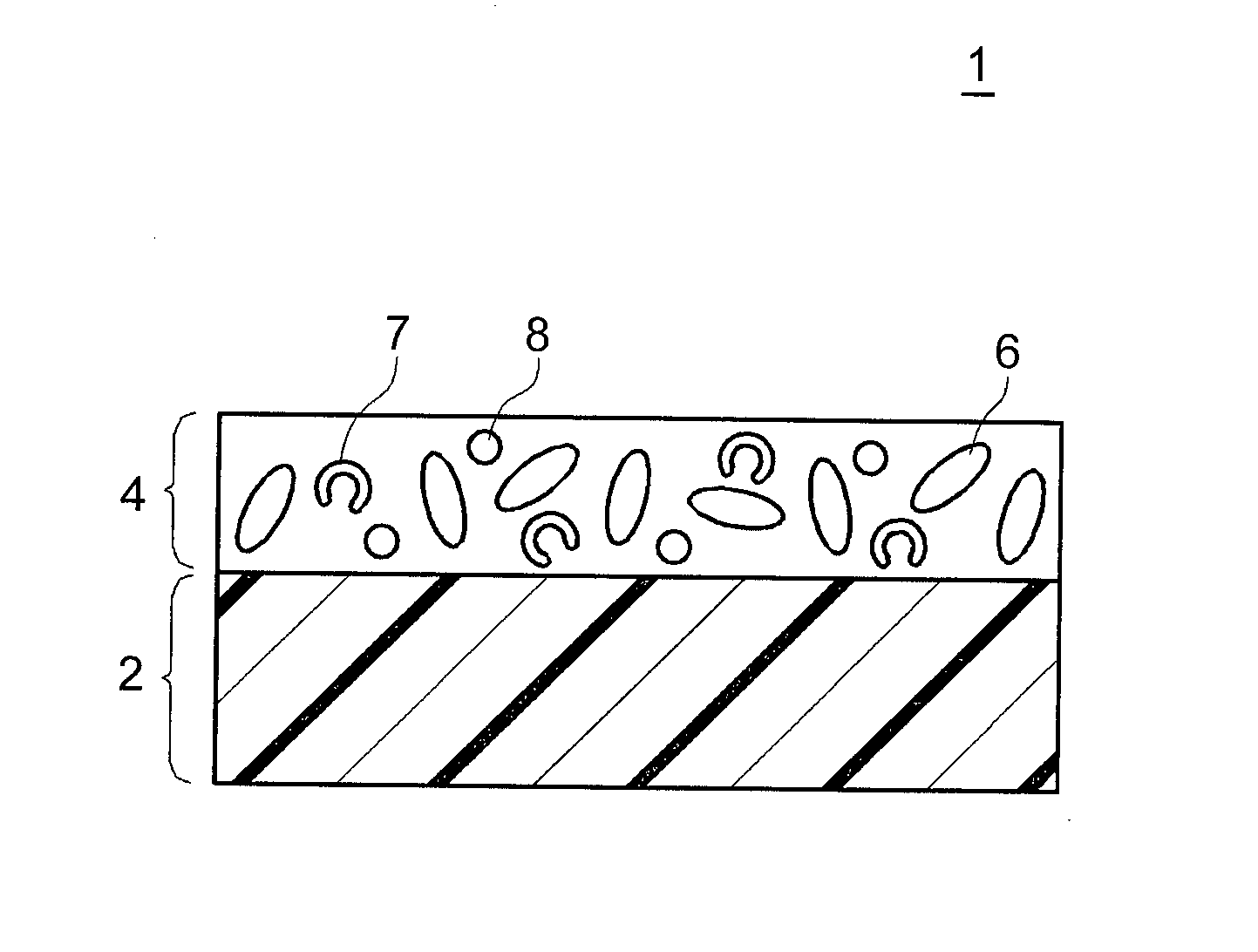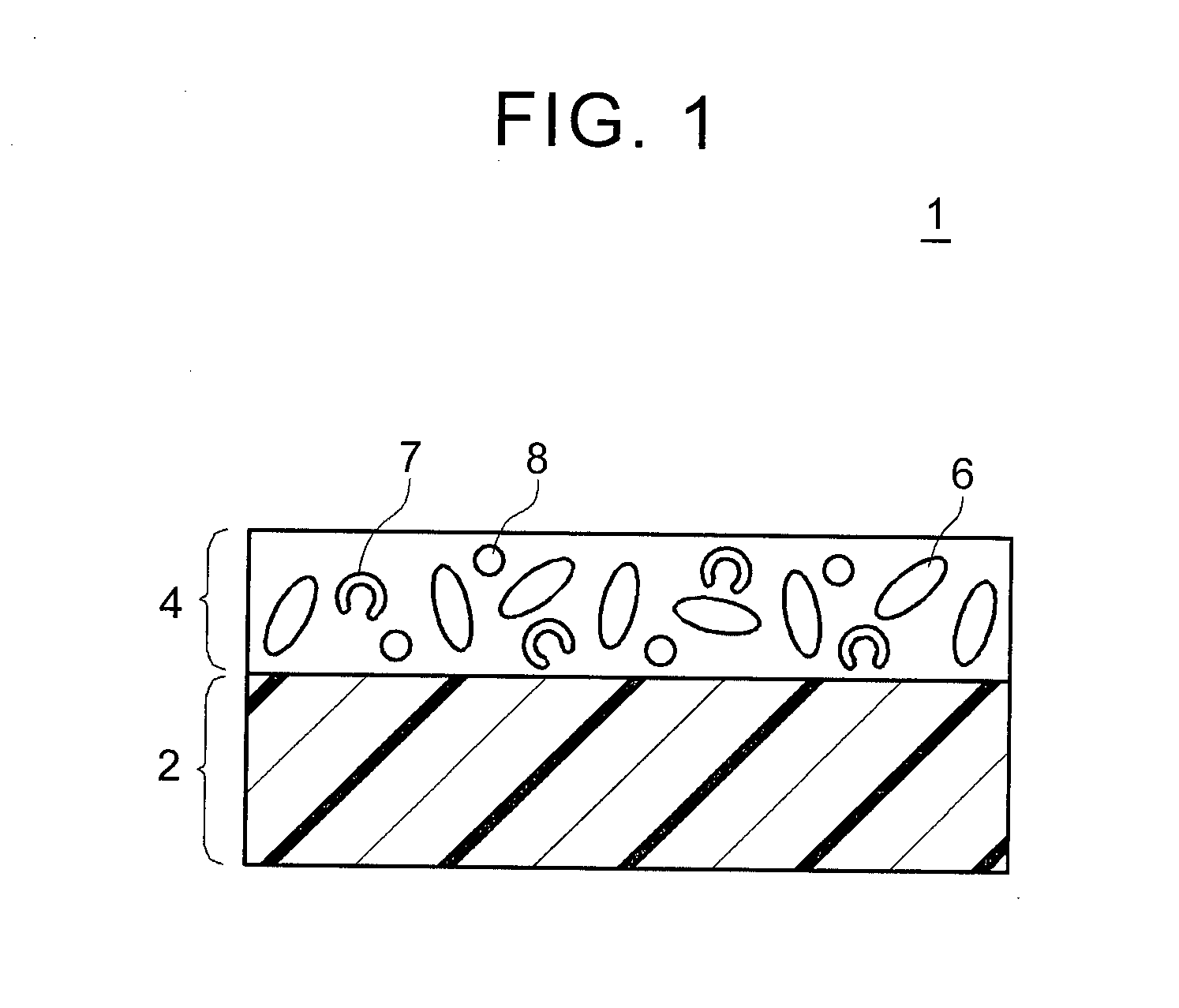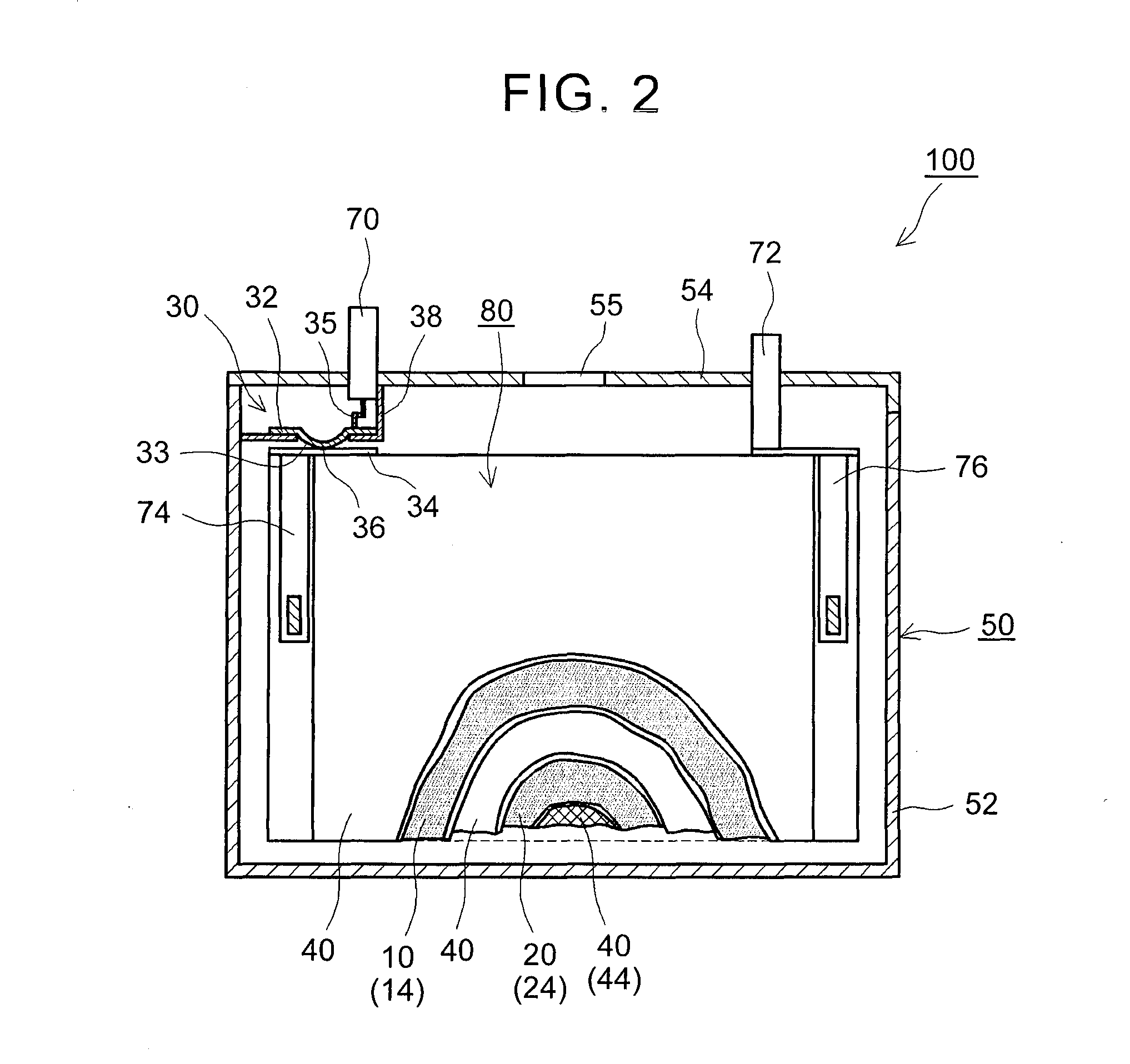Separator for nonaqueous electrolyte secondary battery, and battery including same
a nonaqueous electrolyte and separator technology, applied in the direction of cell components, cell component details, transportation and packaging, etc., can solve the problems of affecting the function of separators holding nonaqueous electrolyte (liquid retention characteristic), deteriorating cycle characteristics, and reducing battery resistance. , the effect of reducing the generation of micro short-circuits
- Summary
- Abstract
- Description
- Claims
- Application Information
AI Technical Summary
Benefits of technology
Problems solved by technology
Method used
Image
Examples
example 1
[0057]First, alumina powder (having an average particle diameter of 0.5 μm and a BET specific surface area of 4 m2 / g) as an inorganic filler, hollow bodies made of an acryl resin, and styrene-butadiene rubber (SBR) as a binder were weighed at amass ratio of 85:10:5, and were mixed with ion-exchanged water using CLEARMIX (registered trademark) made by M Technique Co., Ltd., thereby producing a slurry composition. The composition was gravure-coated on one surface of a separator substrate having a three-layer structure of PP / PE / PP (having an average thickness of 20 μm and a porosity of 70 volume %) and was dried, thereby producing a separator sheet (having a total thickness of 25 μm) which includes a porous heat resistance layer having an average thickness of 5 μm formed on one surface of the substrate.
[0058]Then, a slurry composition was produced by mixing LiNi1 / 3Co1 / 3Mn1 / 3O2 powder as a positive electrode active material, polyvinylidene fluoride (PVdF) as a binder and acetylene black...
examples 2 to 14
[0061]In each of examples 2 to 14, 55 (N=55) nonaqueous electrolyte secondary batteries were produced in the same manner as in example 1 described above except that the properties (the particle porosity and the average particle diameter) of the hollow bodies and the content percentage of the hollow bodies in the porous heat resistance layer are changed as shown in Table 1 below. In examples 6, 7, 13 and 14 in which the content percentages of the hollow bodies in the porous heat resistance layers are differently set from the others, the difference of the hollow bodies from the whole solid content was allocated to the inorganic filler and the binder at the same percentage as in example 1.
TABLE 1High TemperatureCycle CharacteristicStorage(50° C.,Characteristic (60° C.)1000 cycles)OverchargeHollow BodiesInitialSeparatorTest afterAveragePropertyCapacityThicknessCapacityHighParticleParticleContentIVRetentionafterRetentionTemperaturePorositydiameterPercentageResistanceRateCycleRateStorage(...
PUM
| Property | Measurement | Unit |
|---|---|---|
| particle porosity | aaaaa | aaaaa |
| particle porosity | aaaaa | aaaaa |
| particle diameter | aaaaa | aaaaa |
Abstract
Description
Claims
Application Information
 Login to View More
Login to View More - R&D
- Intellectual Property
- Life Sciences
- Materials
- Tech Scout
- Unparalleled Data Quality
- Higher Quality Content
- 60% Fewer Hallucinations
Browse by: Latest US Patents, China's latest patents, Technical Efficacy Thesaurus, Application Domain, Technology Topic, Popular Technical Reports.
© 2025 PatSnap. All rights reserved.Legal|Privacy policy|Modern Slavery Act Transparency Statement|Sitemap|About US| Contact US: help@patsnap.com



